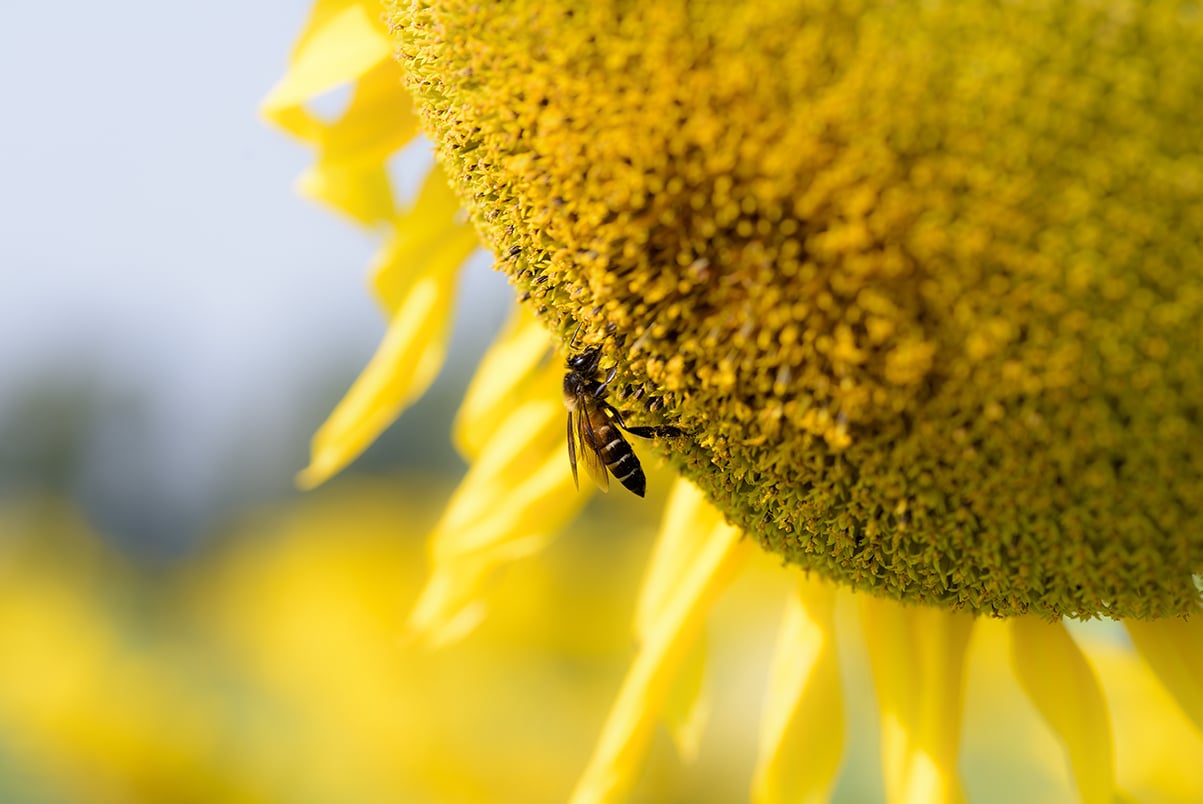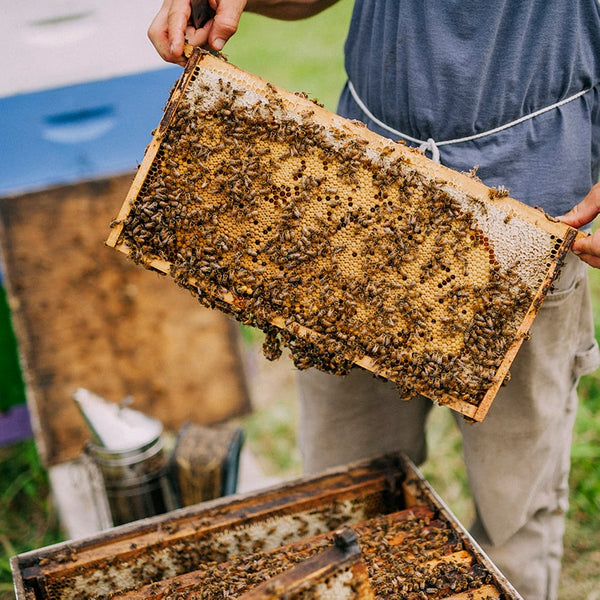
Protecting the Honeybee Population
February 17, 2021 3 min read
There are over 4,000 species of bees in North America, and they are rapidly disappearing, including the honeybee population. While not all bees product honey, the majority of these bees are pollinators, who play an integral role in plants reproduction.
Honey bees are one of the many bee populations that could be in danger of disappearing. They are becoming weaker and dying off, due to a variety of factors including colony collapse disorder. In Hawaii specifically, we are challenged with invasive pests such as the veroa mite and the small hive beetle, both of which are emergent threats that have emerged in the last ten years.
The good news is there are some simple solutions to help protect the honeybee population, and you can help.
What You Can do to Protect the Honeybee Population
1. Fill your Gardens with Bee-friendly plants
Honeybees often rely on garden flowers to provide nectar and pollen - aka their food sources. This is especially true in areas where there aren't as many agricultural crops or wild flora.
By filling your gardens with flowering plants and vegetables, you encourage honeybees to pollinate in your garden. Bees like daisy-shaped flowers, such as sunflowers, and also gravitate towards tall plants.
Since bees need a lot of pollen, trees are an excellent source of food. The best trees that produce pollen for bees are willow trees or citrus trees. If you are planting in Hawai'i, plant an Ohia Lehua tree in your garden is an invaluable resource for the bees. Your garden should contain an assortment of plants and trees that are bloom through each season.
Planting flowers that are rich in protein and nectar supports the honeybees production of honey. While you'd ideally want to plant around every season, if you don't have space for a garden, you can also let weeds grow in other parts of your lawn. Dandelions are popular among honeybees and serve as a good source of food. This is most beneficial in the spring before other plants are in bloom.
Within your garden, you can also plant herbs, such as mint and lavender. These types of herbs attract bees. Ensure that you put a shallow container of water in your garden so that the bees can re-hydrate. Add some twigs or small rocks in the water so that the bees have a place to land.
2. Say no to Pesticides and Other Harmful Chemicals
Having a garden also means that you also have to deal with pests in your plants. We recommend you avoid using pesticides and herbicides because they contain chemicals that are very harmful to honeybees. Namely, Round-Up and it's chemical constituent, glyphosate, is severely toxic not only to human health, but to honeybee health as well. While some products label themselves as "organic," they can still be detrimental to bees. If you're unsure, check in with a local beekeeper or regenerative gardener in your area.
There are numerous natural pest control treatments you can utilize to help keep pests away from your garden and protect honeybees. If you are buying new plants, make sure they weren't treated with any of these toxic chemicals, as they will linger and can be transferred to bees.
Bee habitats are deteriorating each year, as agricultural businesses convert grasslands into mono-culture farms contaminated with harmful pesticides.
Any exposure to dangerous pesticides can be harmful to the health of honeybees. By finding natural alternatives, you are actively preserving honeybee populations.

3. Buy your Honey Locally
When you buy your honey locally, you are financially supporting your local beekeepers and their honeybees.
When you avoid buying honey in bulk at supermarkets, you can reinforce sustainable and environmentally friendly beekeeping practices. Buying your honey at a local farmers market also means that you can meet with your beekeeper and inquire about his or her beekeeping practices.
Local honey also promotes the awareness of honey bees' role in an ecosystem. Bees are an essential part of every ecology, so buying your honey locally also means supporting your local environment.
Local honey will be prepared by local beekeepers. It complies with all food safety requirements but is not adulterated through heating and excessive filtration to give it a long shelf life. It tastes quite different from imported supermarket honey and has a flavor that reflects its natural preservatives and nutritive benefits.
Buying locally-made honey and eating organic goes a long way in helping preserve the honeybee population.

How does this help not only the honeybee population but all the bees?
The wild bee population, including species beyond honeybees alone, is also on the decline. There are many ways that you can help preserve their lives, and by natural consequence, our quality of life. By taking the simple steps we've shared, not only will you help prolong bees' lives, you will also support a local economy. All of these steps are crucial in preserving the bee population.

Stay Connected
Join our mailing list today for exclusive content and specials.

